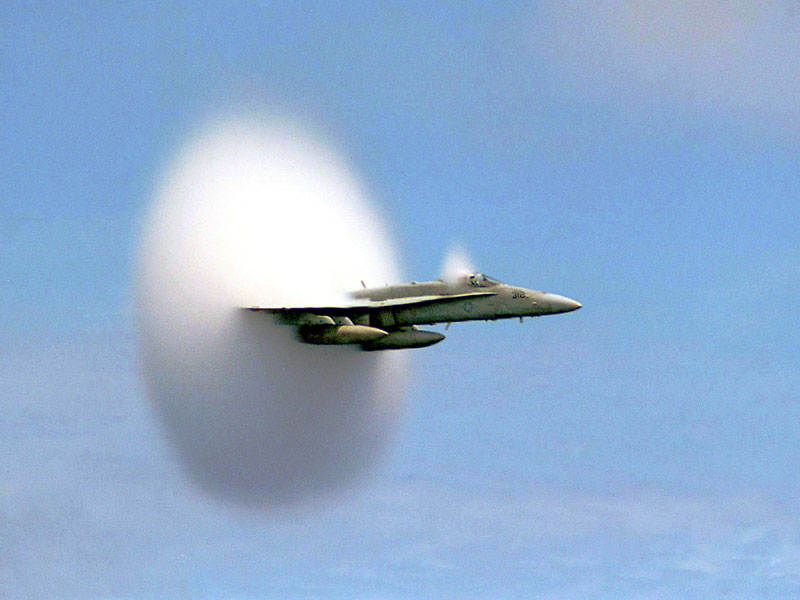Credit & Copyright: Ensign John Gay,
USS Constellation,
US Navy
Explanation:
Is this what a sonic boom looks like?
When an airplane travels at a speed faster than sound,
density waves of sound emitted by the plane
cannot precede the plane, and so
accumulate in a cone behind the plane.
When this
shock wave passes, a listener hears all at once the sound emitted over a longer
period: a
sonic boom.
As a plane accelerates to just break the
sound barrier, however, an unusual cloud might form.
The origin of this cloud is still debated.
A leading theory is that a drop in air pressure at the plane
described by the
Prandtl-Glauert Singularity occurs so that moist air
condenses there to form water droplets.
Above, an
F/A-18 Hornet was photographed just as it
broke the sound barrier.
Large meteors and the
space shuttle frequently produce audible
sonic booms
before they are slowed below sound speed by the
Earth's atmosphere.
1999 2000 2001 2002 2003 2004 2005 2006 2007 2008 2009 2010 2011 2012 2013 2014 2015 2016 2017 2018 2019 2020 2021 2022 2023 2024 2025 |
Yanvar' Fevral' Mart Aprel' Mai Iyun' Iyul' Avgust Sentyabr' Oktyabr' Noyabr' Dekabr' |
NASA Web Site Statements, Warnings, and Disclaimers
NASA Official: Jay Norris. Specific rights apply.
A service of: LHEA at NASA / GSFC
& Michigan Tech. U.
|
Publikacii s klyuchevymi slovami:
sonic boom - udarnye volny
Publikacii so slovami: sonic boom - udarnye volny | |
Sm. takzhe:
Vse publikacii na tu zhe temu >> | |
